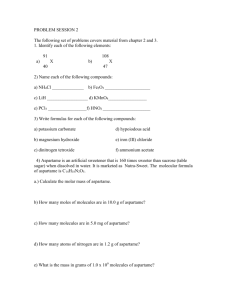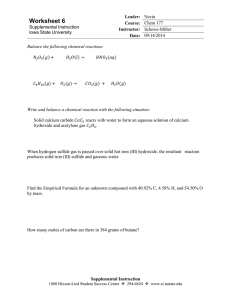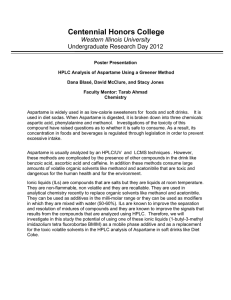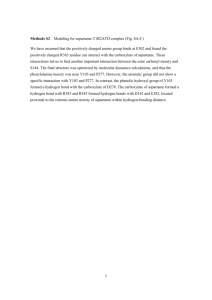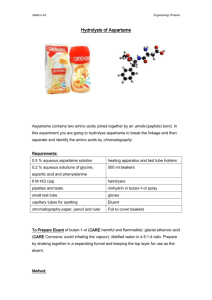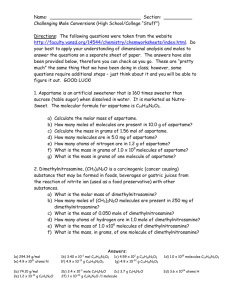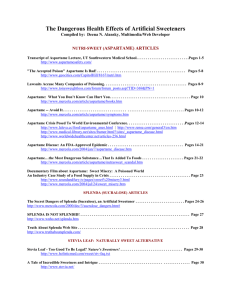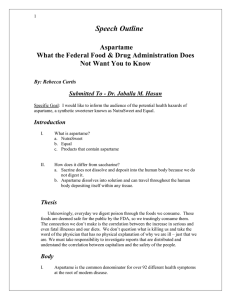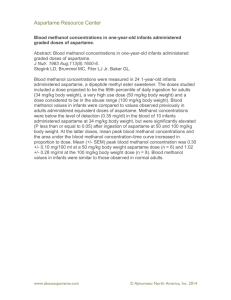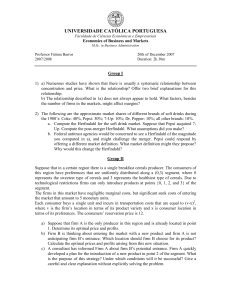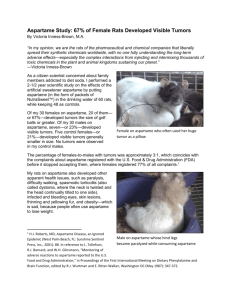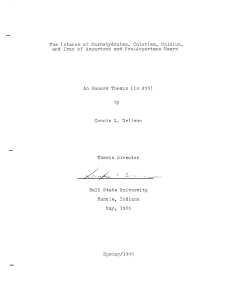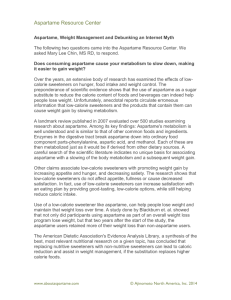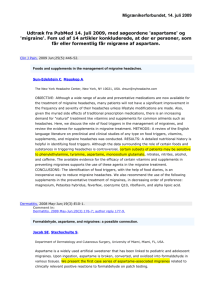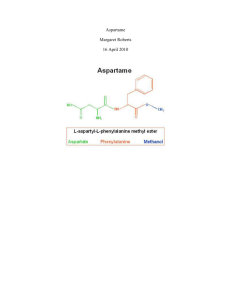Aspartame Resource Center Comparative metabolism of aspartame
advertisement
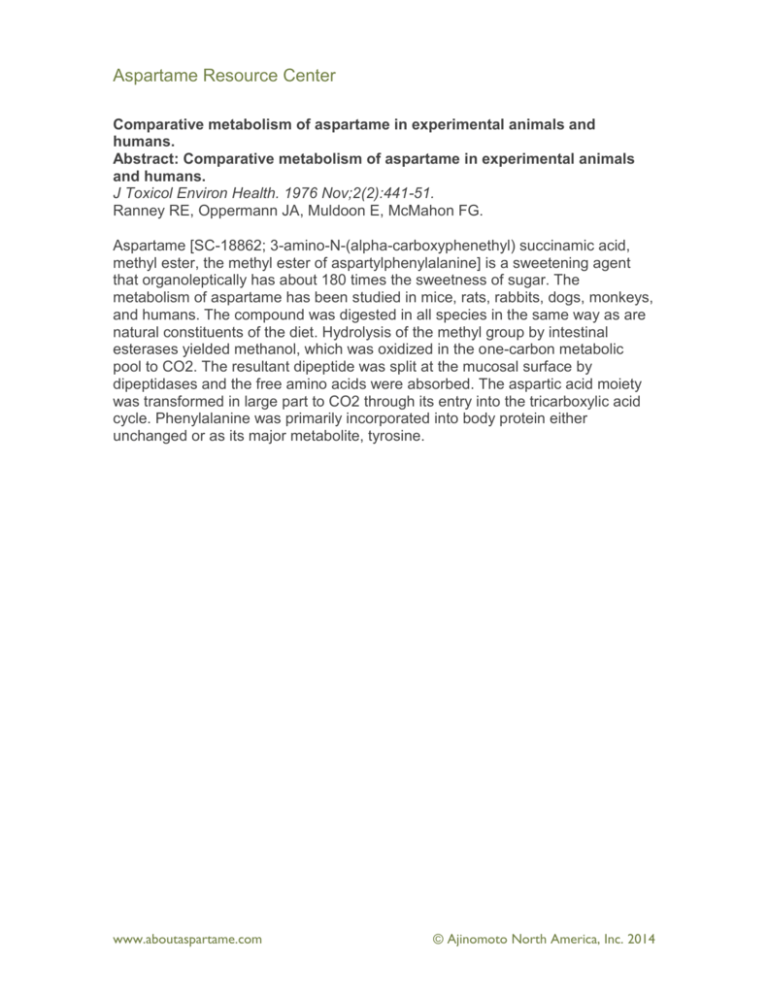
Aspartame Resource Center Comparative metabolism of aspartame in experimental animals and humans. Abstract: Comparative metabolism of aspartame in experimental animals and humans. J Toxicol Environ Health. 1976 Nov;2(2):441-51. Ranney RE, Oppermann JA, Muldoon E, McMahon FG. Aspartame [SC-18862; 3-amino-N-(alpha-carboxyphenethyl) succinamic acid, methyl ester, the methyl ester of aspartylphenylalanine] is a sweetening agent that organoleptically has about 180 times the sweetness of sugar. The metabolism of aspartame has been studied in mice, rats, rabbits, dogs, monkeys, and humans. The compound was digested in all species in the same way as are natural constituents of the diet. Hydrolysis of the methyl group by intestinal esterases yielded methanol, which was oxidized in the one-carbon metabolic pool to CO2. The resultant dipeptide was split at the mucosal surface by dipeptidases and the free amino acids were absorbed. The aspartic acid moiety was transformed in large part to CO2 through its entry into the tricarboxylic acid cycle. Phenylalanine was primarily incorporated into body protein either unchanged or as its major metabolite, tyrosine. www.aboutaspartame.com © Ajinomoto North America, Inc. 2014
